By Paula Kelly Harline
Happy Pioneer Day! The morning of 24 July in downtown Salt Lake City, thousands of Westerners watch the “Days of ’47” parade celebrating the 1847 arrival of Mormon pioneers; in the afternoon, they attend a rodeo or take picnics to the canyons; at night they launch as many fireworks as they did for Fourth of July.
What may be less known than the role of Brigham Young in all this is the contribution made by polygamous women. When Brigham Young parceled out Salt Lake City land plots, he allowed polygamous husbands to draw a lot for each of their wives, and this pattern continued exponentially as polygamous wives sometimes moved without their husbands to settlements in Idaho, Utah, Nevada, Arizona, and New Mexico, supporting themselves as teachers, hat-makers, landlords, post mistresses, boarding house proprietors, laundresses, venders, and farmers.
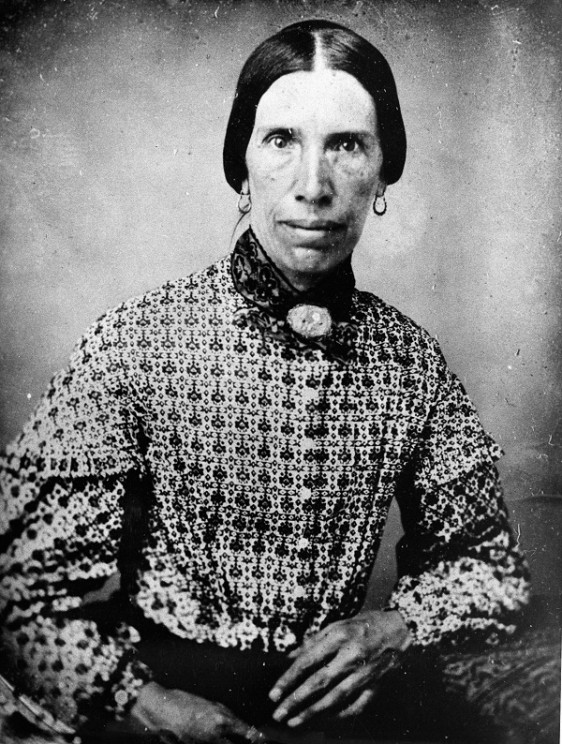
Martha Heywood. Used by permission, Utah State Historical Society, all rights reserved.
For example, in 1850 not long after 39-year-old Martha Spence Heywood arrived in Salt Lake City, she became the third wife of the 35-year-old captain of her wagon train. After a few months of living in the family’s Salt Lake house, Martha moved 90 miles south to the new settlement of Nephi where she had the first of two babies in a wagon with one Church sister attending. She tried to establish herself as a teacher but wrote in her diary that there were “considerably hard feelings” against her “as a school teacher,” maybe because she was sometimes sick or maybe because townspeople resented her husband who did not live in Nephi but had a supervisory role in their struggling settlement. Along with teaching, Martha made hats that her husband advertised in the Salt Lake Deseret News. After a few years in Nephi, she moved to southern Utah and claimed a vacant “good adobe” house. Once again taking up school teaching, she even accepted produce as payment so that any child could attend school and, over the years, established herself as a legendary school teacher. The Heywood family owned homes in three towns.
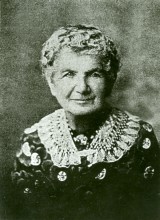
Mary Ann Hafen. Courtesy of International Society Daughters of Utah Pioneers.
Starting in 1890, Mormons no longer officially sanctioned new polygamous marriages, but those who were already married like second wife Mary Ann Hafen carried on until the polygamous generation died out. In 1891, she moved 50 miles away from her “general merchant” husband John (who lived in Santa Clara, Utah, with his first wife) to Bunkerville, Nevada, where they could get cheaper land. Mary Ann wrote in her autobiography that in the “first year” when she and her children were “just getting started” in Bunkerville, her husband came down from Santa Clara “frequently” and “helped [them] a good deal.” But as time went on, “he had his hands full taking care of his other [three] families,” so she cared “for her seven children mostly by [her]self” because, as she explained, “I did not want to be a burden on my husband, but tried with my family to be self-supporting.” John had provided them with “a house, lot, and land and furnished some supplies.” Mary Ann rented out her twenty-five-acre farm up the road—the 1900 census listed her as a “landlord.” Sometimes she and her children used the farm to grow cotton and sorghum cane that she could exchange at mills for cloth and sorghum sweetener. She sewed the family’s clothing on the White sewing machine she saved up for. They preserved peaches and green tomatoes and ate from their large garden, and they kept a couple of pigs, a cow, and some chickens.
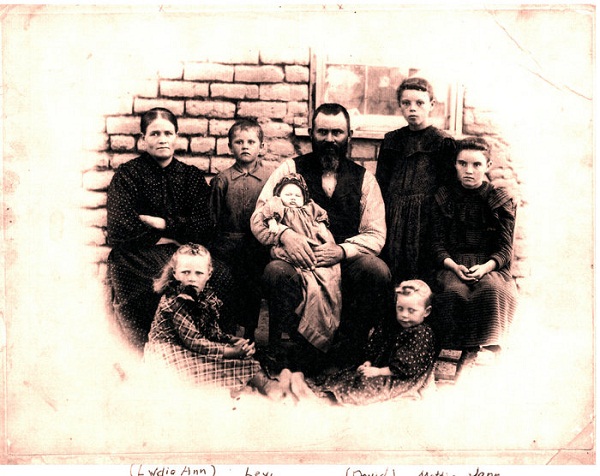
David and Lydia Ann Brinkerhoff Family. Courtesy of Joanne Hadden, family descendant.
In yet another example, first wife Lydia Brinkerhoff settled in the town of Holbrook, Arizona, while the second wife Vina and their husband settled on farmland outside town—the two locations multiplied the family’s financial prospects. In town, Lydia took in boarders, did laundry for hotels, sold vegetables from the farm, and managed the town’s mail contract.
Settling new land was not easy, and, in general, frontier women worked hard sewing linens and clothing, churning butter, making cheese, raising chickens, planting vegetable gardens, preserving jams and jellies, curing meat, cooking, producing soap and candles, and washing clothes. Mormon polygamous wives also took seriously their responsibility to nurture their children into their faith.
During the historical reflection that accompanies Pioneer Day, we can see how polygamous wives also participated in the Western American dreams of independence and expanding land ownership.
Paula Kelly Harline has been teaching college writing for over 20 years for the University of Idaho, Brigham Young University, and Utah Valley University. She has also worked as a freelance writer and artist. She currently lives with her husband, Craig, in Provo, Utah. She is the author of The Polygamous Wives Writing Club: From the Diaries of Mormon Pioneer Women.
Subscribe to the OUPblog via email or RSS.
Subscribe to only religion articles on the OUPblog via email or RSS.
The post Polygamous wives who helped settle the west appeared first on OUPblog.

By Paula Kelly Harline
Mormon bloggers have been in the news lately, with two bloggers recently being excommunicated from the church. It was Ordain Women founder Kate Kelly’s call-to-action writings, meant to recruit Mormon women to her cause, that recently led to her excommunication from the Mormon Church.
If Kelly is an example, Mormon women are no wimps. Because the Church is staffed by lay members, Mormon women routinely run entire Church organizations numbering up to 200 people; they make up one-third of the current missionary population; they believe in education; and they have a long tradition of writing—both in public and in private—from pioneer beginnings up to the current “Bloggernacle.” Here are some examples of this tradition.
(1) Between 1872 and 1914, Mormon women published their own periodical called the Woman’s Exponent that early on went to several thousand women throughout the United States and Great Britain and prompted exchanges with other women’s journals. In its early years, a number of writers argued for polygamy. Exponent editor and polygamous wife Emmeline Wells condemned the false notion of the pedestal, and argued in favor of equal pay for equal work and equality in athletic programs.
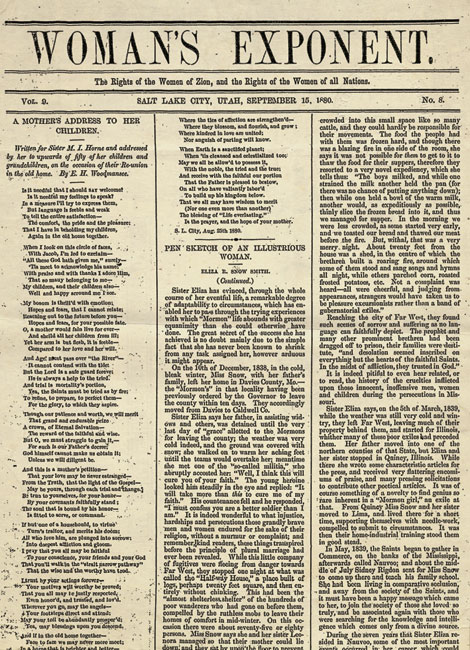
The September 15, 1880 issue of the Woman’s Exponent. (Volume 9, Number 8.) Public Domain via Wikimedia Commons.
(2) More intimately, many nineteenth-century women kept diaries and wrote autobiographies, including some obscure polygamous wives. In the 29 I’ve studied closely, these writers held their heart and faith in one hand, and their guts and hesitations in the other. They explore the chasm between romantic love and triangular love, between resistance to other wives and friendship with them, and between religious belief and lived experience. This tradition of keeping personal writings continues today—for example, my 80-year-old mother has written about 12 journals during her lifetime and is working on her autobiography.
(3) Between 1914 and 1970, the Church’s women’s organization published The Relief Society Magazine to unite and educate women and provide ordinary women with an outlet for their writing, including stories, poems, and plays. Although less polemical than Woman’s Exponent, the Magazine was edited by women, for women, and had a wide readership.
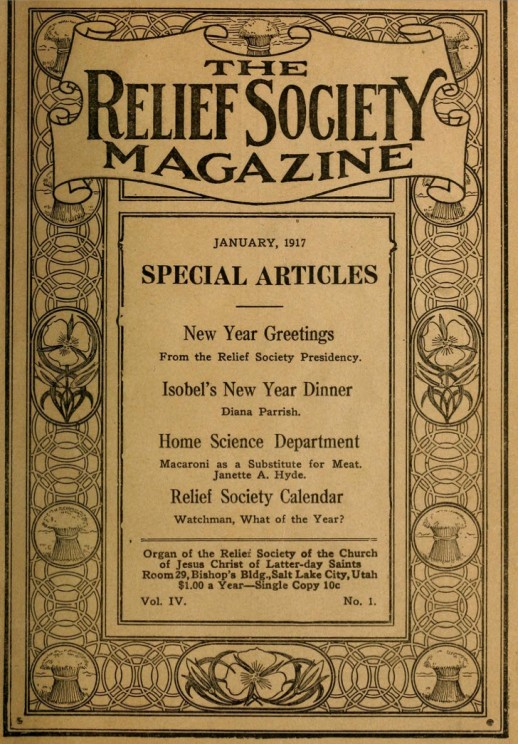
First page of the January 1917 issue of Relief Society Magazine. Pubic Domain via Wikimedia Commons.
(4) After The Relief Society Magazine was merged with a new church publication for both male and female readers called Ensign, in 1974, a group of northeastern Mormon feminists started the independent Exponent II, which they describe as “a newspaper forum for Mormon women to share their life experiences in an atmosphere of trust and acceptance,” an “exchange” that allows them to “better understand each other” and “shape the direction” of their lives. Exponent II celebrates its 40th anniversary this year, and since 2005, they’ve added a blog.
(5) The “Bloggernacle,” a nickname for the Mormon blogosphere (a port-manteau of ‘blogger’ and ‘tabernacle’ where Mormons worship on special occasions), is so vast that bloggers are currently organized by Mormon Archipelago into big and small islands and isles of the sea—and among them, one can find the orthodox and the heterodox and everything in between. Here are links to a few popular women bloggers:
- Jana Riess, an acquisitions editor in the publishing industry, blogs on religion, history, popular culture, ethics, and biblical studies;
- Neylan McBaine, a brand strategist who works for Bonneville Communications, best known for its work on Mormon.org and I’m a Mormon campaign, blogs as “a marketer, writer and mother” who grew up in New York City;
- Californian Joanna Brooks’ Ask Mormon Girl focuses on “the ins-and-outs and ups-and-downs of living the ‘it’s complicated’ version of faith”;
- Kristine Haglund, editor of Dialogue: A Journal of Mormon Thought, blogs on By Common Consent and recently wrote about the history of excommunication as a guest blogger;
- Kathryn Skaggs blogs about traditional marriage and current events at A Well-Behaved Mormon Woman;
- Mormon Church historian Ardis E. Parshall’s ready access to archival materials underpins her mostly humorous posts on LDS history and culture, along with fiction, jokes, and art from past church magazines, found at Keepapitchinin.
(6) Which brings us back to Kate Kelly, currently the most notorious Mormon woman blogger. In contrast to websites such as Feminist Mormon Housewives that embrace anger (“angry activists with babies to feed”), Kelly’s Ordain Women perhaps attempts to mimic official church publications with its non-threatening word choice and colorful high-quality photographs of church-going Mormons that are similar to church magazine Ensign photos. Her website frequently cites scriptures and male and female Church leaders, concluding that “The fundamental tenets of Mormonism support gender equality.” Her means to reach this goal? She invites Mormons to “coalesce around the goal of women’s ordination” by participating in “public actions”—Mormon versions of civil disobedience such as marching on Temple Square with the goal of attempting to enter all-male meetings. Most recently, her website encourages Mormon women to host six “discussions” on topics related to women’s ordination. To get started, followers are provided with a downloadable invitation, get advice about who/how to invite, and can watch the “live launch.” The six discussions come with detailed lesson plans and six accompanying sample video discussions that are each at least an hour long.
In the excommunication letter Kelly received from her bishop, he explains to her that it’s not a problem to question or “even that you believe that women should have the priesthood,” but that she “persisted” in an “aggressive effort” to “persuade” others “to join [her] movement,” one he believes undermines the church. Subsequently, the Bloggernacle is straining under the weight of its innumerable bloggers discussing where the Virginia bishop should have drawn the line, or whether he should have drawn it at all.
And so the tradition continues, if in new and much faster, and thus much more public, media.
Paula Kelly Harline has been teaching college writing for over 20 years for the University of Idaho, Brigham Young University, and Utah Valley University. She has also worked as a freelance writer and artist. She currently lives with her husband, Craig, in Provo, Utah, and is the author of The Polygamous Wives Writing Club: From the Diaries of Mormon Pioneer Women.
Subscribe to the OUPblog via email or RSS.
Subscribe to only religion articles on the OUPblog via email or RSS.
The post Mormon women “bloggers”: a long tradition appeared first on OUPblog.

Polygamy is a major part of Mormon history, dating back to the 1800s when Mormon leaders first encouraged it. While it is now a taboo subject, it had an undeniable impact on Mormon life, as illustrated in this infographic.

Download a jpg or pdf of the infographic.
Paula Kelly Harline has been teaching college writing for over 20 years for the University of Idaho, Brigham Young University, and Utah Valley University. She has also worked as a freelance writer and artist. She currently lives with her husband, Craig, in Provo, Utah. She is the author of The Polygamous Wives Writing Club: From the Diaries of Mormon Pioneer Women.
Subscribe to the OUPblog via email or RSS.
Subscribe to only religion articles on the OUPblog via email or RSS.
The post Mormon pioneer polygamous wives [infographic] appeared first on OUPblog.









